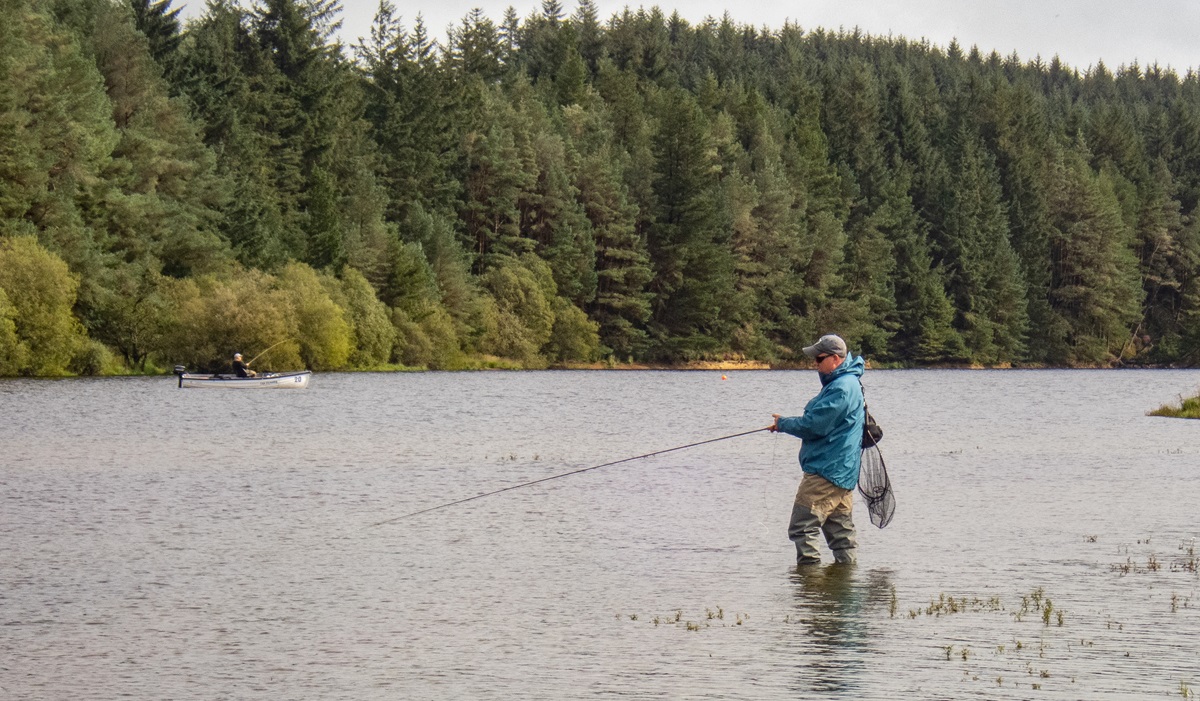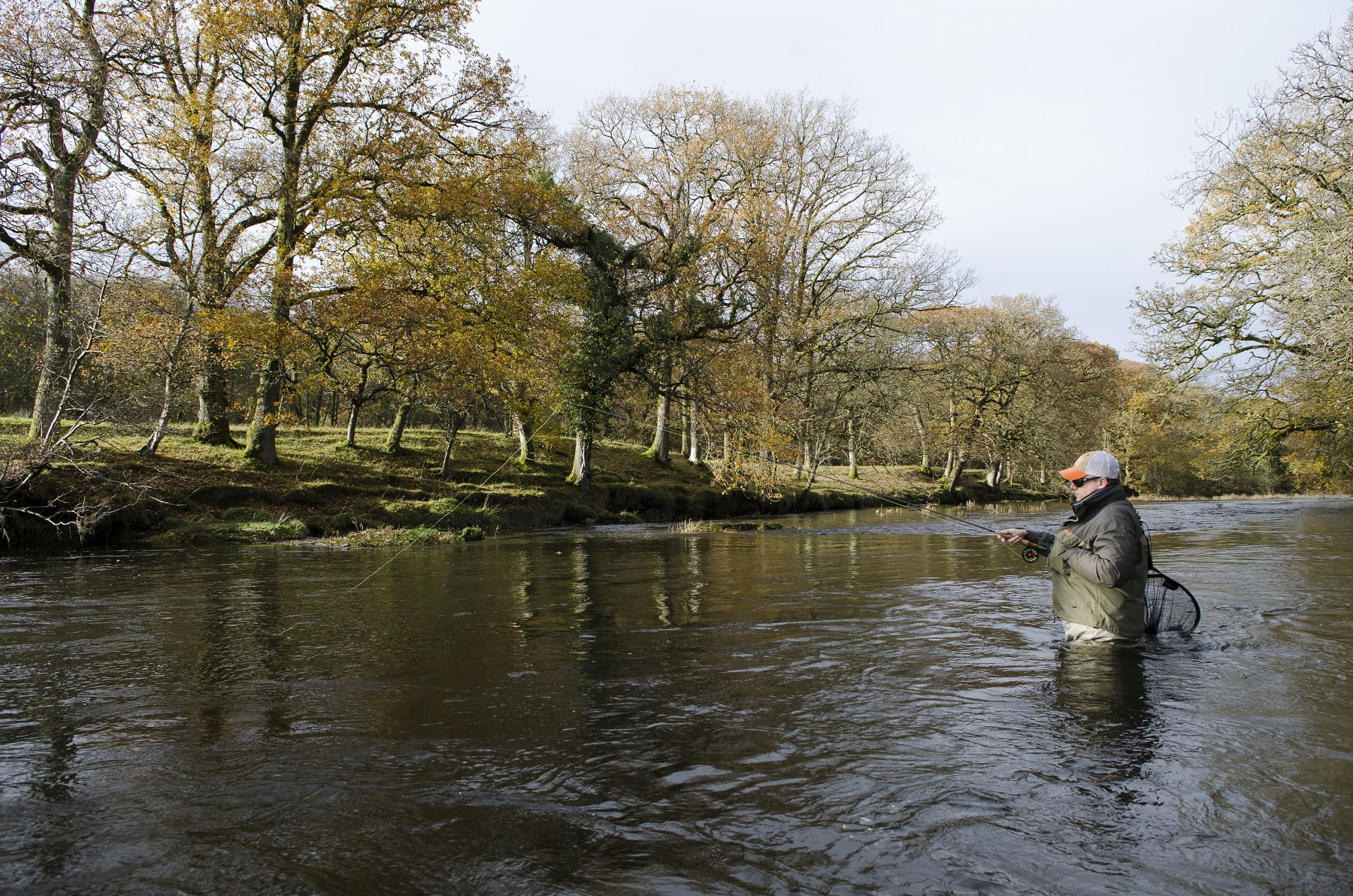Fly fishing for trout in natural lakes and reservoirs – Part 1
Angling writer and expert fly tier George Barron looks at Fly Fishing for trout in the natural lakes and reservoirs of Wales, the first article of a 3 part series.
The pleasures of fly fishing for wild brown trout in Wales have been enjoyed by local and visiting anglers for hundreds of years. The heady days of the late 1800’s when estate books recorded catches from some Welsh waters of up to a hundred trout in a day, weighing 30 to 40 pounds may now be lost in the mists of time, but there are still countless waters scattered throughout the Principality where fishing for wild brown trout will still produce fantastic sport and healthy catch numbers.
The wild upland lakes in Wales continue to be a magnet both for local and visiting anglers following a traditional way and content to simply cast a fly and tread the same banks as the long gone footprints and memories that many of the great anglers and angling writers of yesteryear left behind. The history and the folklore are important, but likely more so is to experience catching wild brown trout in mountain lakes (llynneodd)) set amongst some of the most incredible scenic locations in the UK.
Angling in its many disciplines has always been important to the rural economy of Wales and the printed word has long trumpeted the quality and quantity of salmon and sea-trout caught yearly on our rivers. Justifiably so, but we should not let this overshadow the potentially top-class sport that is available all season long on our natural lakes and many reservoirs.
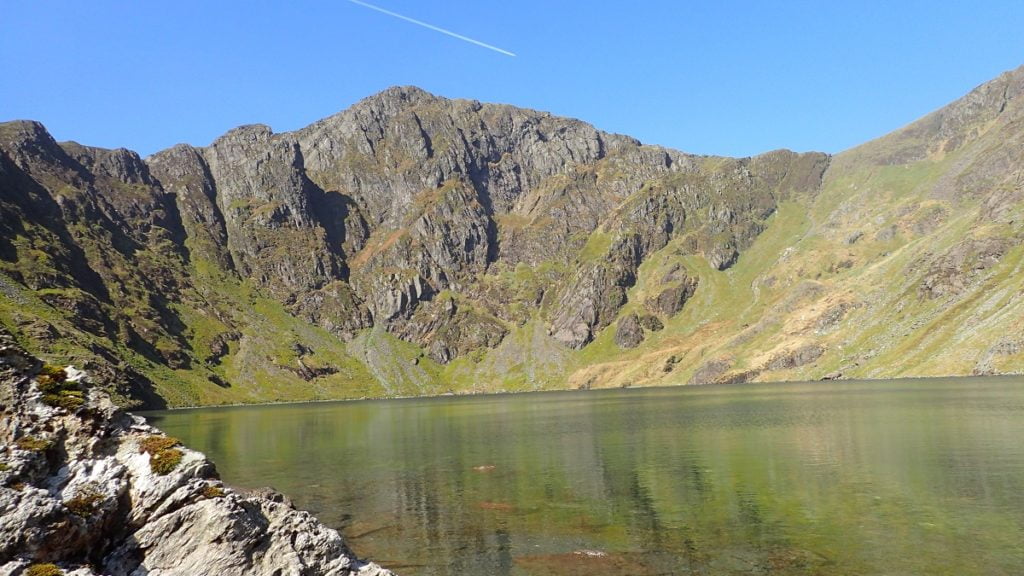
When the Good Lord decided to hand out water, Wales must have been first in the queue. From Anglesey and the majestic Snowdonia range in the north, down through the Cambrian Mountains and on to the Brecon Beacons, Pembrokeshire and the South Wales Valleys, the country is pebble-dashed with natural lakes – our ‘ crown jewels ‘ as the late Moc Morgan once referred to them.
From the late 1800’s through to the mid1900’s, the demand for clean and plentiful Welsh water was such that it necessitated the damming of numerous valleys to supply water to many English cities. The creation of these large new reservoirs, which at the o utset were liberally stocked with Loch Leven eyed ova, have, over the years, become highly regarded national angling venues, set amidst some of the country’s most spectacular scenery.
For the angler visiting Wales for the first time the decision of ‘ where to fish ‘ may initially seem quite a daunting task because of the vast amount of lakes and reservoirs available. The choice can be simplified and the choice made fairly easily depending on what type of fishing he or she enjoys or wants to pursue.
Natural Lakes.
The wild and the wonderful wilderness lakes will undoubtedly hold a far greater appeal for the solitary angler happy to walk the shoreline in pursuit of wild brown trout from the bank. These smaller natural waters hold an excellent head of trout averaging in size between eight to twelve inches plus many bigger specimens. Lovely and lively, these ‘ punching above their weight ‘ wild fish will produce plenty of visual top-of-the-water sport and provide the more experienced angler with an ideal venue from which to introduce a son, daughter or friend to the joys of fishing.
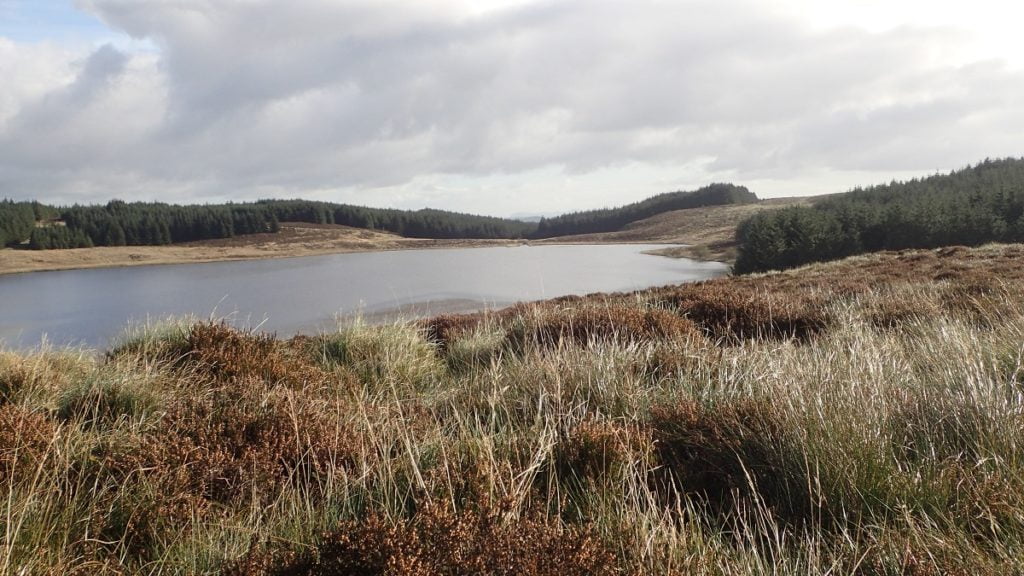
Unlike many lochs in some of the more remote parts of the Scottish Highlands and islands, almost all the natural lakes in Wales are accessible by road, save for a few that may require a little walk in but will prove well worth the effort. Biting midges are also less of a problem on the Welsh mountains because most lakes sit on bedrock or shale and there is less bogland. Most natural lakes lie about 1000 feet above sea level and the majority of the trout’s food is terrestrial (wind blown) beetles, heather fly, cow dung flies and daddy longlegs. From the water, large and small sedges, small fish and tadpoles early season would be normal, plus some waters do enjoy healthy olive hatches.
Some of these lakes do have dams which were built to increase the area of water catchment to supply local mines etc – they should be treated as natural waters.
The largest groups and the biggest catchment area of waters would undoubtedly be those in the central Wales belt. Well known waters such as the five Elan Valley lakes, most notably, Claerwen and Craig Goch.
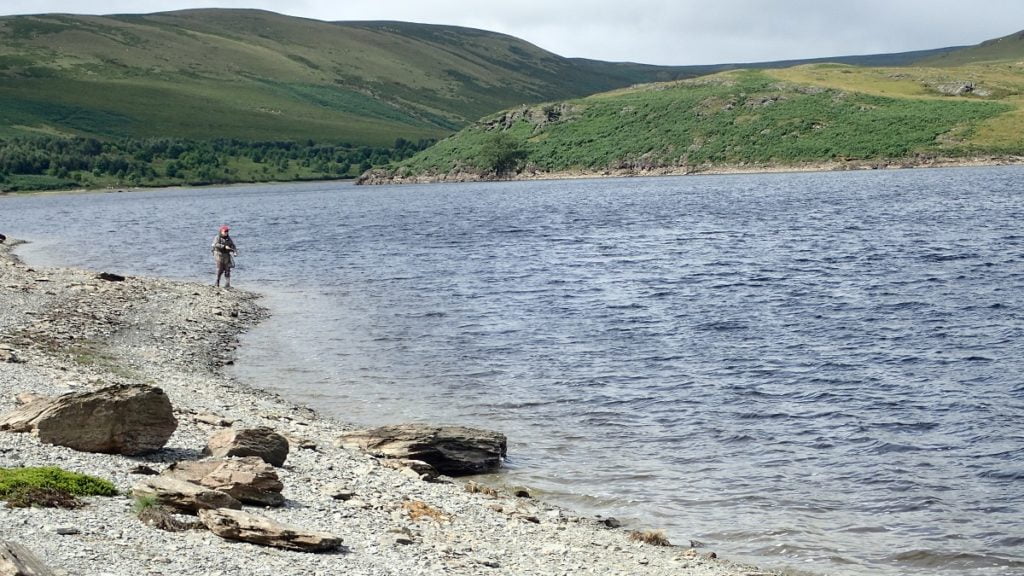
Not too far away, but more easily approached from another direction are the Teifi Pools and slightly further north, Aberystwyth Angling Association control around a dozen wild waters, albeit a few do also allow spinning and worming – check for details.
Nant-y-Moch reservoir lying in the Cambrian mountains, a very lively water, gives around eleven miles of bank fishing to explore and should you prefer something smaller, Talybont Angling Club control four nice waters close by.

The southern fridges of Snowdonia also have a nice scattering of small and medium sized lakes of which most are fairly easily accessed. Local clubs normally have maps indicating the best approach and parking areas. Many of these can be booked online with the Wye and Usk foundations fishing passport scheme, where maps and access details are supplied when a booking is made.
Wild trout fishing from a boat is understandably a restricted to only a few club waters but they are available to visiting anglers. Whereas Lake Vyrnwy, perhaps the best kept wild trout fishery in Wales has around a dozen boats available, but no bank fishing.
Tackle and the basics.
The secret to fishing these moorland and wilderness waters is to travel light, so the bare necessities are normally all that’s required. Any soft action fly rod in the 9 to 10 foot range, a floating or intermediate fly line will handle most options. It’s often windy, so a stiffish 4lb to 6lb leader material helps, especially if you use two or three wet flies casts. Basic traditional wet flies are fine, size 12 best, plus a selection of small dry flies. All can usually be bought from the local tackle shop which will also be the source of up to date fishing information.
Wellies / waders, jacket, hat and sun glasses for safety’s sake, and what you need to eat and drink and that’s you. If you’re solo it’s always a good idea to let someone know where you intend going as mobile phone signal can be a bit hit and miss in the hills.
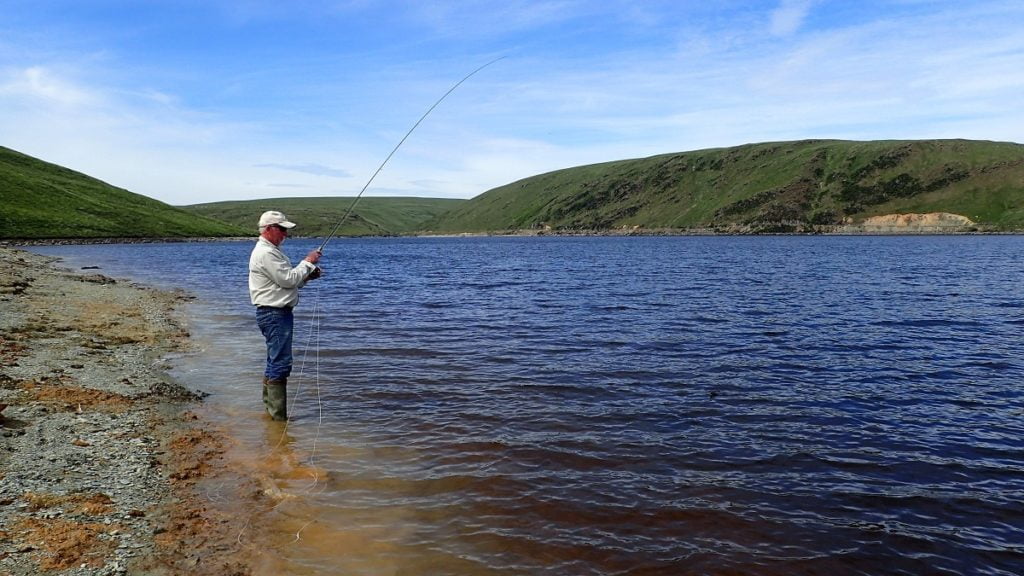
Technique.
Unlike stocked fish, wild brown trout do not move far from their natural lies, they are predominately territorial. For the angler new to this style and type of fishing, the secret is to keep moving slowly along the shore casting and retrieving. Do not stay permanently in one place casting because the trout are not going to come to you. You have to find them. I’d advise against wading unless it is necessary. Noise and disturbance carry to the fish and will not do a lot to improve your catch rate, whereas, stealth and a slow, quiet approach will guarantee more action.
Lakes normally fish best from May to end of September, and especially during the Coch-y-Bonddu and Heather fly hatches. Fly-life in and around these hill waters can be quite sparse at times, but once the weather and the land begins to warm up early summer, you can expect good hatches of terrestrial beetles and flies such as the iconic Coch-Y-Bonddu beetle and the red-legged Heather fly to really turn the fish and the fishing on.
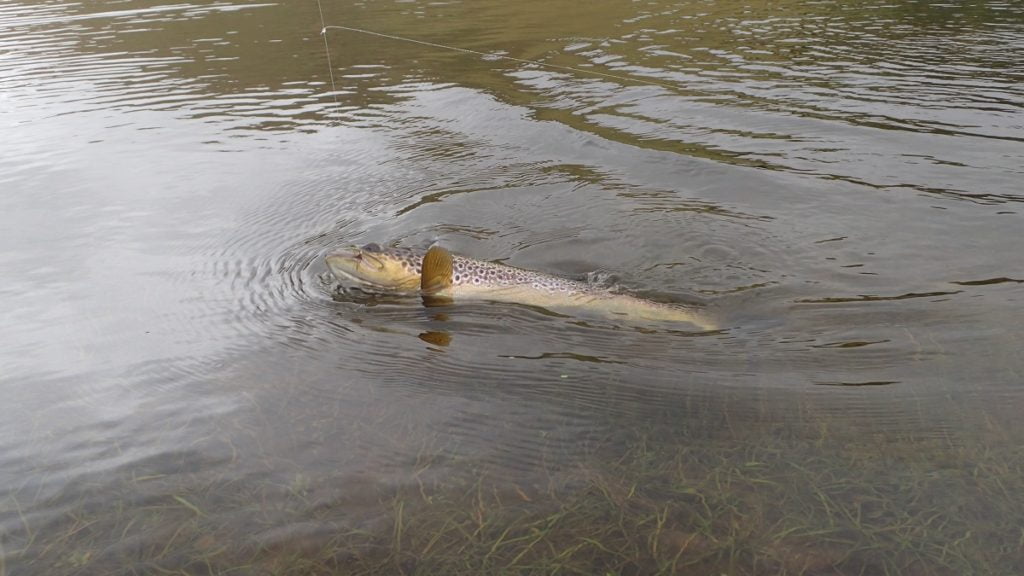
Flies required to catch wild brown trout are often simplicity themselves and can be bought in all the local tackle shops or, should you be a fly dresser, the best patterns are well documented in various angling books. Two books that will be of help regarding both the fishing technique required and the necessary flies to do the job are:
“ At The End Of The Line “ and “ A Fine Line “ both by George Barron, who has fished all these waters for over forty years.
Available from George at: george_barron@btinternet.com

Fishing Clubs of Wales: Crow Valley Angling VIDEO
We join the Crow Valley Anglers on the Cwmbran boating lake, where we learn about the venue and the…
Read More
End of June 2025 Fishing Update – Game, Coarse and Sea
As we head into summer, anglers across Wales are enjoying a diverse range of fishing opportunities. While warmer river conditions…
Read More
Boat Fishing on Cefni Reservoir Anglesey VIDEO
We join Ceri Thomas, Alan ‘Parf’ Parfitt and Lyn Davies on the stunning Cefni Reservoir on Anglesey for a fun…
Read More

